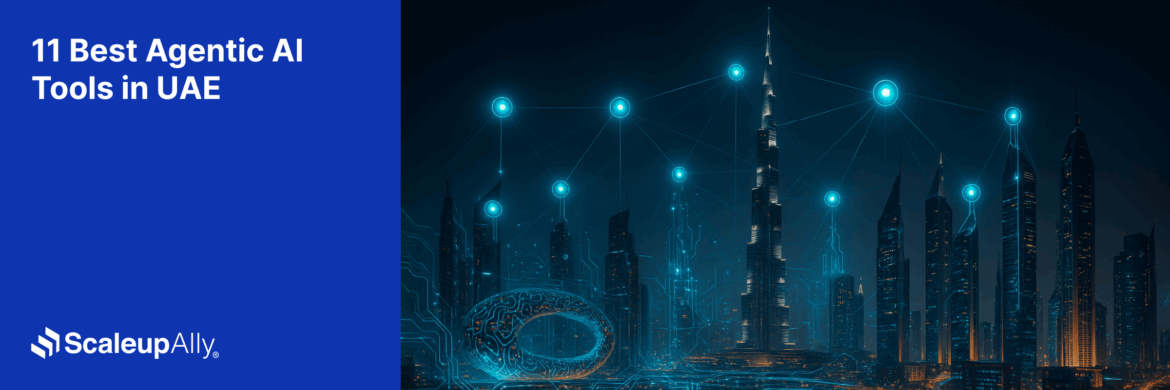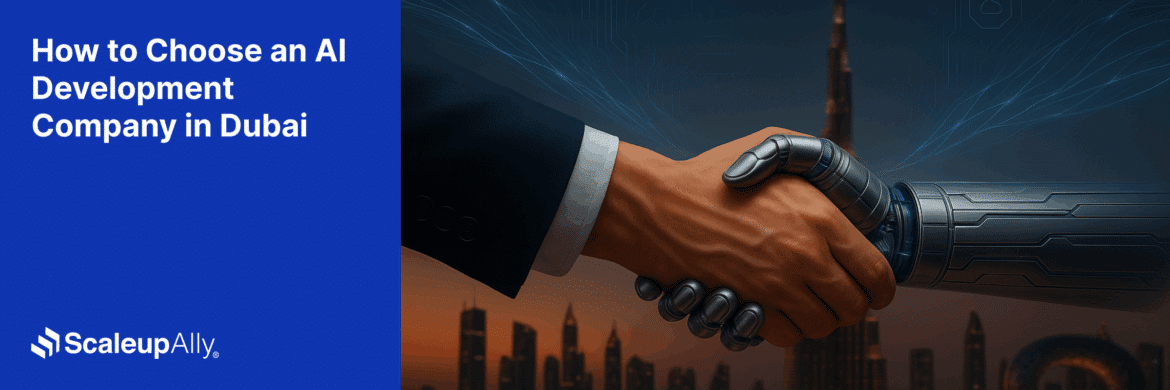
AI Agents Statistics: Usage Insights, Industry Adoption & Market Trends
Manu Jain | August 29, 2025 , 11 min read
Table Of Content
There’s so much talk around AI agents in the business world. And it’s for good reason. They’re reshaping industries. In 2024, the AI agents market was valued at $5.4 billion. But there is still so much growth potential, as it is projected to explode to $50.3 billion by 2030. Even more striking, 85% of enterprises are expected to implement AI agents by the end of 2025. In automating customer service or streamlining complex workflows, AI agents are proving they’re the present reality driving real business transformation. This blog presents AI agents’ statistics you must know as a business leader.
Key Takeaways
- The AI agents market is set to grow from $5.4 billion to over $50 billion by 2030.
- Nearly 70% of Fortune 500 companies already use AI agents, including Microsoft Copilot.
- Healthcare (90% hospital adoption expected by 2025), finance (38% profitability increase projected), and retail (69% revenue growth reported) are seeing results from AI agent implementation.
- Companies are achieving measurable ROI from 3.7x returns on investment to saving millions in operational costs with AI agents handling everything from customer service to predictive maintenance.
- By 2028, 15% of workplace decisions will be made autonomously by AI agents, with one-third of enterprise software incorporating agentic capabilities as standard features.
AI Agent Market Size and Growth Projections
- AI Agent Market Size and Growth Projections
- How Different Industries Are Using AI Agents in 2025
- How AI Agents Are Driving ROI and Business Transformation
- Usage Trends: How People Are Engaging with AI Agents
- AI Agents in the Fortune 500: Trends & Examples
- What Does the Future Hold for AI Agents?
- Conclusion
- Frequently Asked Questions
The numbers surrounding AI agents are nothing short of remarkable. Agentic AI has morphed into one of the fastest-growing markets in tech. Talking about market size and growth projections, different research firms paint slightly different pictures, but they all point to growth.
For example, MarketsandMarkets projects the market will reach $52.62 billion by 2030. This figure represents a compound annual growth rate of 46.3%. Meanwhile, Precedence Research forecasts an even more aggressive trajectory. They predict the market will hit $236.03 billion by 2034 with a CAGR of 45.82%.
This growth is not sheer luck. Generative AI adoption alone jumped from 55% to 75% between 2023 and 2024, with companies seeing a 3.7x return on investment, driving the AI agent growth. These numbers confirm a strong and growing market for agentic AI.
Regional Market Breakdown
North America is leading the AI agents race. The region captured over 40% of the global market in 2024. Thanks to heavy investments from tech giants.
In the U.S. market, the value was $1.6 billion in 2024, and growth is expected at a CAGR of 43.3% through 2030. This isn’t surprising when you consider that American companies like Microsoft, Google, and Salesforce are essentially at the forefront of the integration of AI agents.
If we look towards Asia, multiple research firms identify APAC as the fastest-growing region for AI agents. Countries like Singapore and India are making massive investments in AI education and infrastructure. They are in the lead, setting the stage for rapid adoption in the coming years.
Europe’s focus on AI governance and ethical implementation is creating a different but valuable approach to AI agent deployment.
Forecast Through 2030
Looking ahead to 2030, the landscape of AI agents will be unrecognizable from today. By 2028, nearly one-third of enterprise software applications will have built-in agentic capabilities. This figure is up from less than 1% in 2024.
When you zoom out further, some projections show the market reaching $220.9 billion by 2035, with a CAGR of 36.55%. These forecasts are based on current adoption rates and the tangible business value companies are already seeing.
How Different Industries Are Using AI Agents in 2025
Each industry is embracing AI agents in its own unique way. The adoption is driven by specific pain points and operational challenges each sector faces. A few industries and how they are using AI agents in 2025:
Healthcare
Healthcare might be the most compelling AI agent success story of 2025. 90% of hospitals are expected to adopt AI agents by 2025 and use them for predictive analytics and improved patient outcomes. 66% of physicians also used health AI in 2024. This represents a 78% increase from just 38% in 2023.
The practical applications are impressive. AI can rule out heart attacks twice as fast as humans with 99.6% accuracy, potentially saving lives through faster diagnosis.
The financial impact is equally remarkable. The average ROI for AI in healthcare is $3.20 for every $1 invested, with typical returns seen within just 14 months.
Finance
Financial services have always been data-driven, making it a natural fit for AI agents. Between 2024 and 2028, financial services are projected to account for 20% of the global AI spending increase. This represents hundreds of billions in investment.
The results justify that investment. Financial institutions report a 38% increase in profitability by 2035, attributed to the integration of AI agents.
The applications span everything from customer service to complex risk analysis. 80% of banks and financial institutions recognize the potential of AI for fraud detection, customer service, and investment insights. Banks are essentially rebuilding their core operations around these intelligent systems.
Retail
Retail has emerged as one of the most aggressive adopters of AI agents, driven by fierce competition and razor-thin margins. 69% of retailers leveraging AI agents report significant revenue growth due to personalized shopping experiences. 76% of retailers are also increasing their investment in AI agents over the next year, focusing on customer service applications such as automated inquiries and order tracking.
What makes retail particularly interesting is the direct connection between AI agent capabilities and customer satisfaction. They create experiences that feel more human than many traditional retail interactions.
eCommerce
65% of online retailers have integrated AI agents with CRM systems to manage customer support. This has led up to a 20–30% boost in online sales through personalized recommendations.
Still on that, about 70% of shoppers, especially Gen Z, prefer AI agents for quick responses, driving smoother digital experiences. Generative AI has also reduced cart abandonment by 25%, while 62% of eCommerce businesses report improved customer satisfaction after using AI.
Manufacturing
Manufacturing’s approach to AI agents reflects the industry’s engineering mindset—practical, results-focused, and deeply integrated into operational processes. More than 77% of manufacturers have implemented AI to some extent (as compared to 70% in 2023).
The impact on maintenance alone is remarkable. AI-driven predictive maintenance has reduced downtime by 30-50% in manufacturing sectors, leading to substantial cost savings. In manufacturing, where unplanned downtime can cost thousands of dollars per minute, that’s transformational.
What’s particularly telling is the human-AI collaboration preference. Rather than fully autonomous AI bots, most manufacturing specialists (53%) would prefer working with collaborative bots or “copilots” (AI agents that support human workflows instead of fully replacing them).
Logistics
Logistics and supply chain management represent one of the most data-rich environments for AI agents, where the complexity of global operations creates countless optimization opportunities. Research shows that AI could enrich the manufacturing sector with an extra $3.8 trillion GVA in 2035, much of which involves logistics and supply chain optimization.
How AI Agents Are Driving ROI and Business Transformation
The promise of AI has been talked about for years, but AI agents are where the rubber finally meets the road. What makes AI agents different from earlier AI implementations is their ability to actually do things, not just analyze or predict. They’re making decisions and delivering results. The numbers coming out of early adopter companies are impressive.
Let’s start with the hard numbers, because that’s what ultimately matters to business leaders. AI-enabled workflows have tripled in profit contribution, improving operating profit by 2.4% in 2022, 3.6% in 2023, and 7.7% in 2024.
Top-performing organizations achieve up to 18% ROI from their efforts, well above typical cost-of-capital thresholds.
The efficiency gains from AI agents aren’t the usual “10% productivity improvement” that gets lost in the noise of daily operations. They’re substantial, measurable changes that fundamentally alter how work gets done.
Take customer service, where the transformation is most visible. 30% reductions in support costs have been reported by businesses using AI customer service. But it’s not just about cutting costs. A 32% increase in revenue has been reported by companies using AI in customer service.
The ROI story of AI agents is about fundamentally reimagining what’s possible in business operations, customer relationships, and competitive strategy. The companies getting this right are building entirely new capabilities that will define the next decade of business success.
Usage Trends: How People Are Engaging with AI Agents
The way people use AI agents tells a completely different story than what the tech press might have you believe. We’re in a much more interesting reality where people are selectively choosing when and how to engage with these systems, often in surprisingly practical ways.
The adoption curves we’re seeing aren’t the typical slow technology rollouts we’ve grown used to. While younger users are definitely leading adoption, older demographics are finding their own compelling use cases.
Shopping and Purchase Behaviors
Shopping with AI agents has become surprisingly mainstream. As mentioned above, about 70% of shoppers, especially Gen Z, prefer AI agents for quick responses. Also, 65% of online retailers have integrated AI agents with CRM systems to manage customer support, leading to a 20–30% boost in online sales through personalized recommendations.
Voice Assistants and Daily Use
The most used AI-powered assistants are Google Assistant (used by 39% of consumers), Amazon’s Alexa (36%), and Apple’s Siri (29%). In the same report, 75% of smartphone users utilize AI voice assistants for daily tasks, such as reminders, web searches, and smart home management. These are mundane, everyday tasks that voice assistants handle more conveniently than traditional interfaces.
Trust in AI agents is highest among Millennials (72%), followed by Gen X (68%), Gen Z (64%), and Boomers (60%). The fact that even 60% of Boomers trust these systems suggests voice assistants have moved well beyond early adopter territory.
People are using voice assistants to control their homes, manage their schedules, get news updates, make calls, send messages, and even control their cars. The technology has become invisible infrastructure rather than a novelty feature.
AI Agents in the Fortune 500: Trends & Examples
Fortune 500 companies are leading the AI agent revolution, with adoption rates that would have seemed impossible just two years ago. Nearly 70% of Fortune 500 companies now use Microsoft 365 Copilot, while more than 85% of the Fortune 500 are using Microsoft AI solutions.
The results speak for themselves. 77% of enterprise users observed definite productivity increases, with 10-15% productivity gains and 19% reduction in burnout.
More than 230,000 organizations, including 90% of the Fortune 500, use Copilot Studio to create custom agents.
AI now accounts for 12% of IT budgets, with 98.4% of organizations planning to expand AI investments in 2025. These AI agents statistics demonstrate that Fortune 500 companies view AI agents as essential infrastructure, not experimental technology.
What Does the Future Hold for AI Agents?
The future of AI agents is already unfolding. By 2028, at least 15% of routine workplace decisions will be made independently by agentic systems, up from zero autonomous decision-making in 2024. That’s a complete transformation in just four years.
Also, the same report states that nearly 33% of enterprise software applications will have built-in agentic capabilities by 2028. These AI agents statistics suggest we’re heading toward a world where AI agents become as common as email or spreadsheets.
Conclusion
The AI agents statistics don’t lie; this technology is transforming businesses faster than anyone predicted. Fortune 500 giants and growing enterprises are implementing AI agents and seeing productivity gains, cost savings, and competitive advantages that are impossible to ignore.
The future isn’t waiting. Ready to explore how AI agents can transform your business? Contact us today to discover your opportunities.
Frequently Asked Questions
Q: What is the market size of AI agents in 2025?
The AI agents market is valued at approximately $7.6 billion in 2025, up from $5.4 billion in 2024. It’s projected to reach $50+ billion by 2030.
Q: What industries benefit most from AI agents?
Healthcare leads with 90% hospital adoption expected by 2025, followed by finance (38% profitability increases), retail (69% revenue growth), and manufacturing (40% downtime reduction). These sectors see the biggest measurable returns from AI agent implementations.
Q: What are the key risks and concerns of using AI agents?
Main concerns include data security, compliance issues, and integration complexity. However, 77% of healthcare organizations cite patient privacy worries, while 78% of businesses don’t fully trust autonomous systems yet, indicating need for proper governance frameworks.
Q: Are AI agents replacing human jobs?
AI agents are augmenting rather than replacing workers. While automating 15-50% of routine tasks by 2027, they’re creating 97 million new roles by 2025. Most successful implementations focus on human-AI collaboration, not replacement.
Related Blogs

OpenAI for Businesses [Benefits, Use Cases & Challenges]
Discover the benefits of OpenAI for businesses. From reducing costs to scaling operations and enriching customer experiences. Real-world use cases included.
ScaleupAlly Team
Dec 16 ,
11 min read

Best 11 Agentic AI Tools in UAE: Accelerating Digital Transformation
Discover the top 11 agentic AI tools in UAE for 2025. Explore features, benefits, and tips to choose the right AI tool for your business growth.
Manu Jain
Nov 6 ,
9 min read

How to Choose an AI Development Company in Dubai: A Complete Guide
Find out how to choose the right AI development company in Dubai. Learn key factors, local considerations, and tips to select the best partner.
Manu Jain
Nov 6 ,
9 min read


